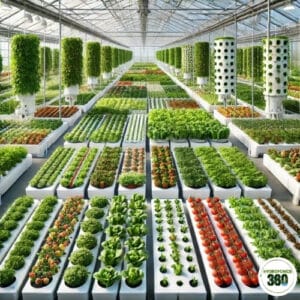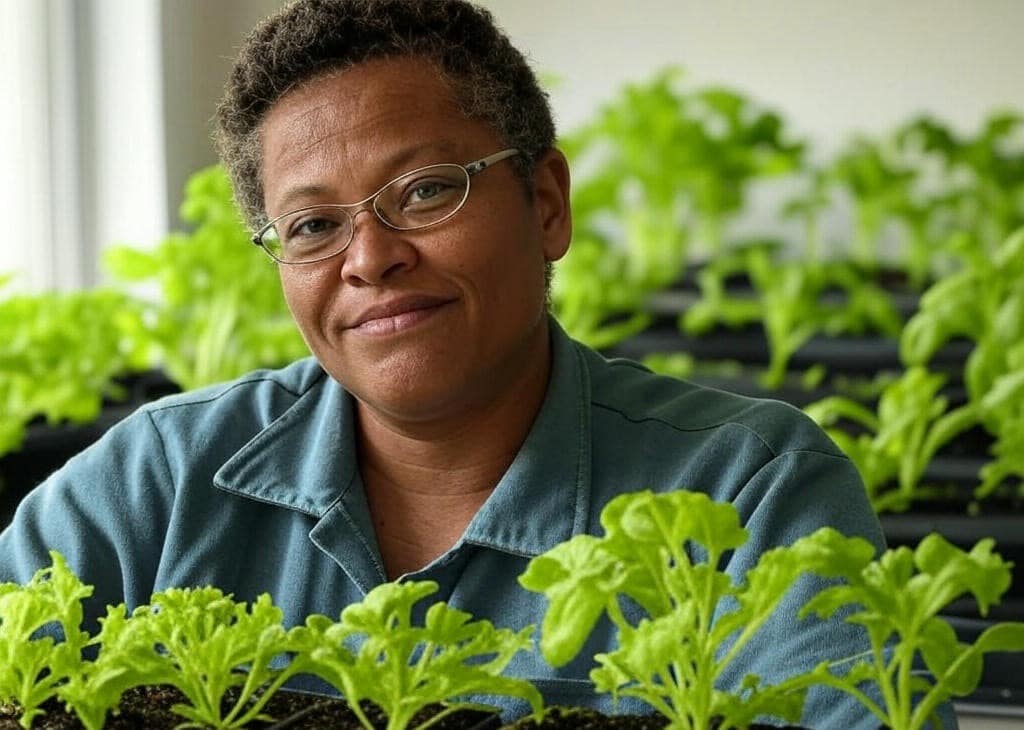Let’s Discover What Can Be Grown in Hydroponics
Table Of Content
Ever since I discovered that you could cultivate your own food without needing a huge backyard, I’ve been captivated by the idea of urban gardening. If you’re limited in space or simply seeking a more efficient way to grow plants, hydroponics offers a remarkable solution. By using water enriched with nutrients instead of traditional soil, you can transform even the coziest corner of your home into a vibrant, thriving garden.
I’m excited to share my journey, along with some handy tips and tricks, to show you exactly what can be grown in hydroponics.

The Best Hydroponic Crops You Can Grow
Not every plant will thrive in a hydroponic setup, but I’ve discovered some vegetables, greens, herbs, fruits, plants, microgreens, and flowers that consistently do well. Here’s a rundown of some of the best crops you can try, along with my personal insights and recommendations.
Leafy Greens
There’s nothing quite like the taste of fresh, crisp greens right on your countertop. I love growing lettuce, spinach, kale, and chard in my hydroponic system.
Growing Tips:
These greens prefer cooler conditions around 18–22°C (65–72°F) and work best. I usually maintain a pH of 5.8–6.2 in my nutrient solution, which has helped my greens develop beautifully. Good lighting is key, too. Whether it’s natural sunlight or a trusty LED grow light, aim for at least 12 hours of light daily.
My Experience:
I still remember the thrill of harvesting my first batch of lettuce. It took only about four weeks! The leaves were crisp and full of life, perfect for a summer salad.
Aromatic Plants and Herbs
Herbs hold a special place in my heart (and my kitchen). Hydroponics really brings out the best flavors and aromas in herbs like basil, cilantro, and mint.
- Basil:
I’m a huge fan of basil—it’s a must-have for making pesto or simply garnishing your favorite pasta dish. Basil thrives with a pH between 5.5 and 6.5, warm temperatures around 20–25°C (68–77°F), and plenty of light (about 14 hours a day). I’ve noticed that my hydroponic basil has a much more intense aroma than what I used to get from soil-grown plants.
- Cilantro:
With its delicate flavor, cilantro is perfect for salsa or as a finishing touch on various dishes. It does best in slightly cooler conditions (18–22°C) and a pH around 6.0. Keeping it cool helps prevent it from bolting too early.
- Mint:
Mint is incredibly resilient and grows vigorously in my setup. I like to keep the pH around 6.0–7.0, and a regular trim ensures it doesn’t overwhelm the system. Its fresh taste is fantastic in teas, cocktails, and even desserts.
- Other Herbs:
Oregano, parsley, thyme, and chives also do well in hydroponic systems. I’ve played around with different herbs, and each one has its unique requirements. Adjustments in the nutrient mix often make all the difference.
Vegetables
Hydroponics isn’t just for greens and herbs. Many vegetables can flourish in a soilless environment, though they might need a bit more attention.
- Peppers, Cucumbers, and Tomatoes:
I’ve had success growing tomatoes and peppers hydroponically. These vegetables require a bit of extra support, like a trellis or netting, to keep them upright. They enjoy warmer conditions (22–28°C or 72–82°F) and a pH of 5.8–6.5. Adding a simple support structure for my tomatoes really saved me a lot of hassle during harvest.
Fruits
Strawberries are my favorite in terms of what can be grown in hydroponics. Their sweet flavor and year-round availability make them a popular choice in my garden.
- Strawberries:
These little gems need around 12–14 hours of light daily and thrive in slightly acidic conditions (pH around 5.8–6.2). I often set my grow lights to mimic long summer days, and it’s incredible to see them bloom and produce fruit even when it’s chilly outside.
- Other Hydroponic Fruits:
While strawberries are the most common, some enthusiasts have experimented with small, dwarf fruit varieties. Although these might require specialized systems, they offer a fun challenge if you’re ready to expand your gardening skills.
Flowers
I was pleasantly surprised to discover that hydroponics isn’t just about food. Growing flowers hydroponically can add a delightful touch of color to your indoor space.
- Marigolds:
These cheerful blooms thrive at moderate temperatures (20–25°C or 68–77°F) and need plenty of indirect light. I found that adding a little extra phosphorus to the nutrient mix really helps them produce strong, vibrant blooms.
- Nasturtiums:
With their bright colors and even edible leaves, nasturtiums make a fun addition to any garden. They prefer similar conditions to marigolds—moderate temperatures and a pH of 6.0–6.5.
- Petunias:
Petunias perform best in full-spectrum light and a stable environment. I keep them in a spot that stays between 18–24°C (65–75°F) and a pH around 6.0–6.5, and they reward me with a stunning display of blooms.
Microgreens and Experimental Crops
Microgreens are a fantastic option if you’re looking for something quick, nutritious, and visually appealing.
- Microgreens (e.g., Radish and Broccoli):
These tiny greens are typically ready for harvest in just one to two weeks. They’re packed with nutrients and add a burst of color to your dishes. I love growing a tray of radish microgreens to sprinkle over my meals—they’re always a hit when I have guests over.
- Special and Experimental Crops:
For those who love a challenge, hydroponics offers the chance to grow unusual plants like orchids or even medicinal herbs. I once met a hobbyist who kept meticulous records of every detail—temperature, humidity, and nutrient levels—to ensure his exotic orchids thrived. It’s a level of precision that isn’t for everyone, but it can be incredibly rewarding.
Nailing the Conditions
One thing I’ve learned is that every plant has its own “sweet spot” when it comes to growing conditions. Here are some specifics that might help you get the best results from your hydroponic garden:
For Hydroponic Fruits and Vegetables
- Temperature:
Most fruits and veggies enjoy a range of 18–28°C (65–82°F), with warmer conditions favoring crops like tomatoes and peppers. I always keep a thermometer handy to make sure my system stays within the ideal range.
- Lighting:
Consistent light is crucial. I aim for 12–16 hours of light per day, whether from natural sunlight or full-spectrum LED grow lights.
- Nutrient Mix:
The right balance of nitrogen, phosphorus, and potassium is essential. For fruiting plants, a bit of extra potassium can really boost fruit development. I tweak my nutrient solution based on what I’m growing, and it’s amazing how much difference that makes.
- Support Structures:
For heavier fruits, adding a trellis or net helps prevent the plants from bending or breaking. A simple trellis for my tomatoes has saved me plenty of time and worry.
For Hydroponic Flowers
- Temperature and Light:
Flowers like marigolds, nasturtiums, and petunias need bright, consistent light and moderate temperatures—usually around 20–25°C (68–77°F). I’ve found that a stable environment is key to vibrant, healthy blooms.
- Nutrient Needs:
A nutrient solution rich in phosphorus can promote strong, beautiful blooms. After a few experiments, I finally found the right mix, and the improvement in flower quality was undeniable.
For Hydroponic Herbs
- Basil, Cilantro, Mint, and More:
Herbs are a joy to grow hydroponically because they often develop more concentrated flavors than those grown in soil. Basil needs warmth and plenty of light; cilantro prefers cooler settings; and mint does well in a slightly higher pH range (around 6.0–7.0). I love the versatility these herbs bring to my kitchen and encourage you to experiment with different varieties.
- Culinary Uses:
Whether it’s fresh basil in your pesto, cilantro in a zesty salsa, or mint in a refreshing mojito, there’s nothing like the taste of herbs straight from your own garden. It’s an experience I always recommend—there’s something incredibly satisfying about cooking with ingredients you’ve nurtured yourself.
FAQs
Here are some common questions I’ve encountered about what can be grown in hydroponics. I’ve tried to cover some areas not already discussed above:
Can I grow root vegetables hydroponically?
Yes, you can try growing root vegetables in a hydroponic system, but it can be more challenging. While some crops like radishes or beets work well, bulkier root vegetables such as carrots or potatoes often require more space and a different growing medium than typical hydroponic setups offer.
What about legumes like beans or peas—can they be grown hydroponically?
Absolutely. Legumes, including beans and peas, can thrive in a hydroponic setup, provided you offer them sufficient support for climbing. I’ve seen them do well when supported by trellises, ensuring the plants can grow upward without stressing their roots.
Can mushrooms be grown using hydroponic techniques?
Mushrooms are a bit different because they don’t require light and rely on a substrate to develop. Traditional hydroponic methods aren’t ideal for mushrooms, though there are alternative, substrate-based systems that can mimic some of the benefits of hydroponics.
Are there any crops that are particularly challenging to grow hydroponically?
Yes, certain crops, such as large root vegetables or grains, can be tricky. These plants often have extensive growth requirements that are difficult to meet in a typical hydroponic setup. It’s usually best to start with crops known to thrive hydroponically before experimenting with more challenging ones.
Table Of Content
